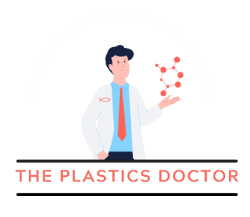Embarking on my journey in the intricate world of injection molding, I’ve encountered firsthand the triumphs and tribulations as a technical service engineer for resin suppliers. These experiences have unveiled some unfortunate instances within the industry, emphasizing the crucial role of targeted training as the panacea for preventing challenges in injection molding operations.
Molding Fundamentals: Unveiling Surprises
In my role, conducting initial assessments to determine the root cause of molding issues has brought forth surprising revelations. Instances where process technicians are unfamiliar with basic concepts, such as the term “cushion,” have not been uncommon. These knowledge gaps are not confined to resin manufacturer labs but also extend to thermoplastic injection molders. Addressing these gaps is imperative and failure to grasp these basics can have cascading effects on the entire molding process.
Polymer Materials: Navigating Complexity
Understanding the strengths and weaknesses of thermoplastic polymers is paramount in injection molding, especially considering the profound impact processing has on end results. A case study involving gate blush on a part molded with a copolymer acetal (POM) exemplifies the importance of this knowledge. When I first examined the process it was out of control as there was no cushion. The process engineer stopped production and we pulled the screw, which had a broken check ring. I came back the next day once the check ring was replaced and noticed excessively high back pressure, low melt temperature, and rapid screw speed all of these conditions independently increase the chances of gate blush. This scenario showcases that even with a process engineer aware of the basics, a lack of in-depth polymer materials knowledge can lead to suboptimal outcomes. The intervention involved reducing back pressure, slowing down the screw RPM, increasing the melt temperature, and adding a few seconds to the cycle time. This case study highlights the critical role of polymer knowledge in problem-solving.
Mold Design: Proactively Shaping Outcomes
Mold design plays a pivotal role successful launches, where the functionality of the final part is at the forefront. A case study involving the upper receiver for a .556 magazine exemplifies the consequences of overlooking mold design considerations. With the weld line positioned in a critical area—the feed lips—the prototype part faced challenges during a 6 ft drop test. After going round and round with the mold maker and molder, we agreed that a new prototype mold needed to be built with the gate location on the opposite of the part. The end result of this new prototype were parts that passed the impact and creep testing. In hindsight, involving an expert earlier in the process could have saved valuable time and resources. This scenario underscores the proactive role that mold design knowledge plays in averting costly modifications and ensuring successful production outcomes.
Processing
While working for a resin manufacture, my colleagues were trying to formulate a grade to offset a competitive material that was being used in a thin walled application. They kept tweaking the formula and kept missing the mark. They got me involved and the first thing I did is went to the molding room to see how we were molding the test bars. Much to my surprise they were transferring by pressure and the fill time variation was tremendous. The customer was using cavity pressure to transfer into pack and their fill time was extremely consistent. The customer killed the project because of the amount of time it was taking and we never had a chance to mold the specimens consistently. I’ve seen a lot of programs fail because of poor process development during the R&D stage.
The Solution: Training and Collaboration
Addressing the pain points outlined above requires a comprehensive solution. The Plastics Doctor can help review your applications before steal is cut, offering solutions to your plastic part issues in development and production. Additionally, the partnership with Kruse Training adds another layer of support to those seeking to improve their knowledge so they can minimize issues in development and production. Kruse Training’s online knowledge and training solution empower professionals at all levels, from entry to experienced engineers. The “Circle of Knowledge” certification program, with its five levels covering various topics, ensures a holistic understanding of injection molding processes. Offering certification for the successful completion of Level 1 training is a testament to the commitment to developing cross-trained professionals capable of designing and molding plastic components successfully.
Conclusion: Forging Ahead to Excellence
In conclusion, my journey through experiences with knowledge gaps in injection molding illuminates the transformative power of targeted training and collaboration. As a seasoned plastics engineer, I play a crucial role in bridging these gaps and ensuring the success of molding operations. With The Plastics Doctor and Kruse Training joining forces, the injection molding industry gains a powerful ally in overcoming challenges, navigating complexities, and ultimately achieving excellence. If your path forward involves a commitment to continuous learning, proactive collaboration, and the cultivation of a knowledgeable workforce, then please consider working with The Plastics Doctor.
